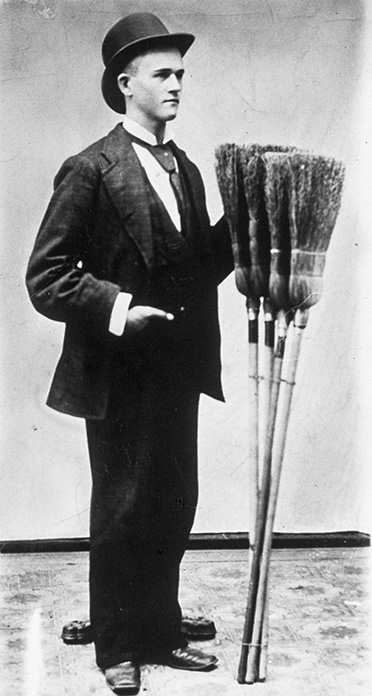
A Humble Founder
Born into a large, Midwestern family, W.K. Kellogg was accustomed to making ends meet. He began working to pay for his own clothing at age seven and took up the life of a traveling salesman at age 14.
His invention of Corn Flakes at age 46 changed his fortune. So, when his personal accountant declared him a millionaire, he exclaimed “I am no such thing!” He never felt comfortable in that role – preferring to see himself as the steward of his fortune, rather than its owner.
“I never, at any period of my life, aspired to become wealthy,” he later wrote, “It is my hope that the property that kind Providence has brought me may be helpful to many others, and that I may be found a faithful servant.”
Visionary Response to Crisis
On June 21, 1930, in the midst of the Great Depression, three of Mr. Kellogg’s trusted colleagues signed the articles of association for a philanthropic foundation bearing his name. They set down a vision for “improving the health, happiness and well-being of children, without discrimination as to race, creed or geographical distribution.”
For much of the 1930s, the Kellogg Foundation worked mainly in and around its hometown of Battle Creek, Mich. through the Michigan Community Health Project (MCHP). The MCHP targeted the obstacles to health and security that held so many children back. MCHP improved K-12 education and facilities, established public health departments and standards for physicians and deployed a Flying Squadron of nurses to serve children and families.
The Ann J. Kellogg School in Battle Creek – named for Mr. Kellogg’s mother – established the practice of teaching children with disabilities alongside children without. While this was a groundbreaking idea when opened in 1931, the Ann J. Kellogg School helped make “mainstreaming” a common practice and it continues to operate.
W.K. Kellogg Foundation: A Legacy for Children
As we close our 90th year, we reflect on our founder’s intent – to ensure the health, happiness and well-being of children. Explore the evolution and impact of the W.K. Kellogg Foundation, from its Midwestern roots to funding innovative community-based solutions across the Western Hemisphere.
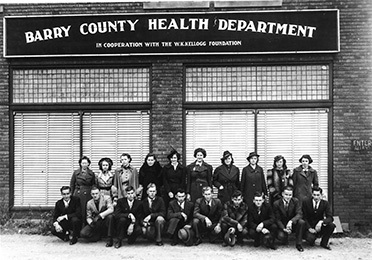
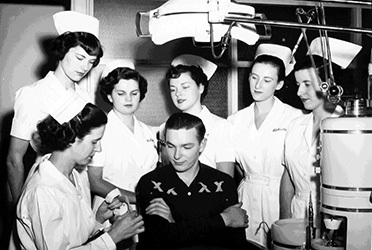
The War Years: Wider Impact in a Global Context
In 1939, the W.K. Kellogg Foundation was preparing a national scale up of public health and education work, but instead shifted its focus and energies to the looming war. Wartime shed light on the significance of public health work and the need for training doctors and nurses to prepare. In fact, nearly every medical school in the United States received funding from the W.K. Kellogg Foundation during this era.
The Kellogg Foundation also expanded grantmaking into the Southern Hemisphere with more than 450 study fellowships for Latin American health professionals. In war-damaged Europe, Kellogg grants helped revive and modernize farm economies.
Mid 20th-Century: Building Networks and Capacity
In the 1950s, the Kellogg Foundation focused on key areas of postwar concern: the development of professions and food systems. In the development of professions, there was a need both for more nurses and new kinds of health care personnel – dental hygienists, medical technicians and hospital administrators. In food systems, grantees developed the first extension programs to connect scientific knowledge with farming practices.
The foundation also pushed the boundaries of institutions to better respond to societal challenges. During this time the foundation supported the development of two-year colleges through the newly-established American Association of Junior Colleges (AAJC). Active funding in racial equity began with grants to Historically Black Colleges and Universities (HCBUs), as well as Tribal Colleges.
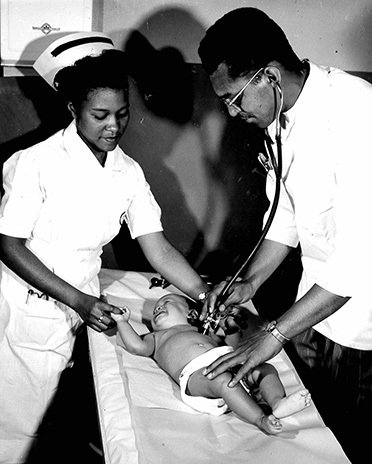
Resources

The First Eleven Years
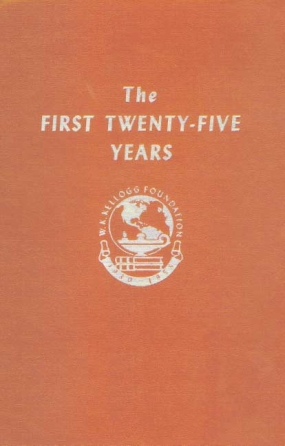
The First Twenty-Five Years
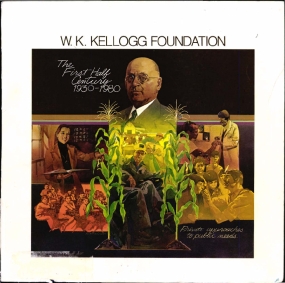
W.K. Kellogg Foundation The First Half Century 1930-1980

From Vision to Innovative Impact: 75 Years of Philanthropy

1980s: Global Reach
By its 50th year, the foundation was among the world’s largest private philanthropic organizations, improving health, agriculture and education on four continents.
In the mid-1980s, the foundation expanded programming into southern Africa. In the face of apartheid, college scholarships from the Kellogg Foundation gave unprecedented opportunities to Black South Africans.
In the 1990s, like most modern organizations, the Kellogg Foundation was quick to champion information technology but retained the community focus – reaching out to the millions of people who lacked access to technology because of poverty, illiteracy or geographic isolation.
A Transformative Era – 2007 and Beyond
In 2007, the foundation renewed its commitment to Mr. Kellogg’s intent by assessing the philanthropic landscape, as early trustees had done.
That survey led to a refocused mission statement: “The W.K. Kellogg Foundation supports children, families, and communities as they strengthen and create conditions that propel vulnerable children to achieve success as individuals and as contributors to the larger community and society.”
“At the heart of this evolution,” read the foundation’s 2010 annual report, “is the recognition that families of vulnerable children live in an ecosystem in which the conditions creating their vulnerability frequently become self-reinforcing and perpetuating.”
This period of study led to powerful commitments – to being the most effective anti-racist organization in the U.S, committing to places for a generation, developing local leadership and a renewed vow to follow the lead of communities as they forge solutions to the problems their children face.

